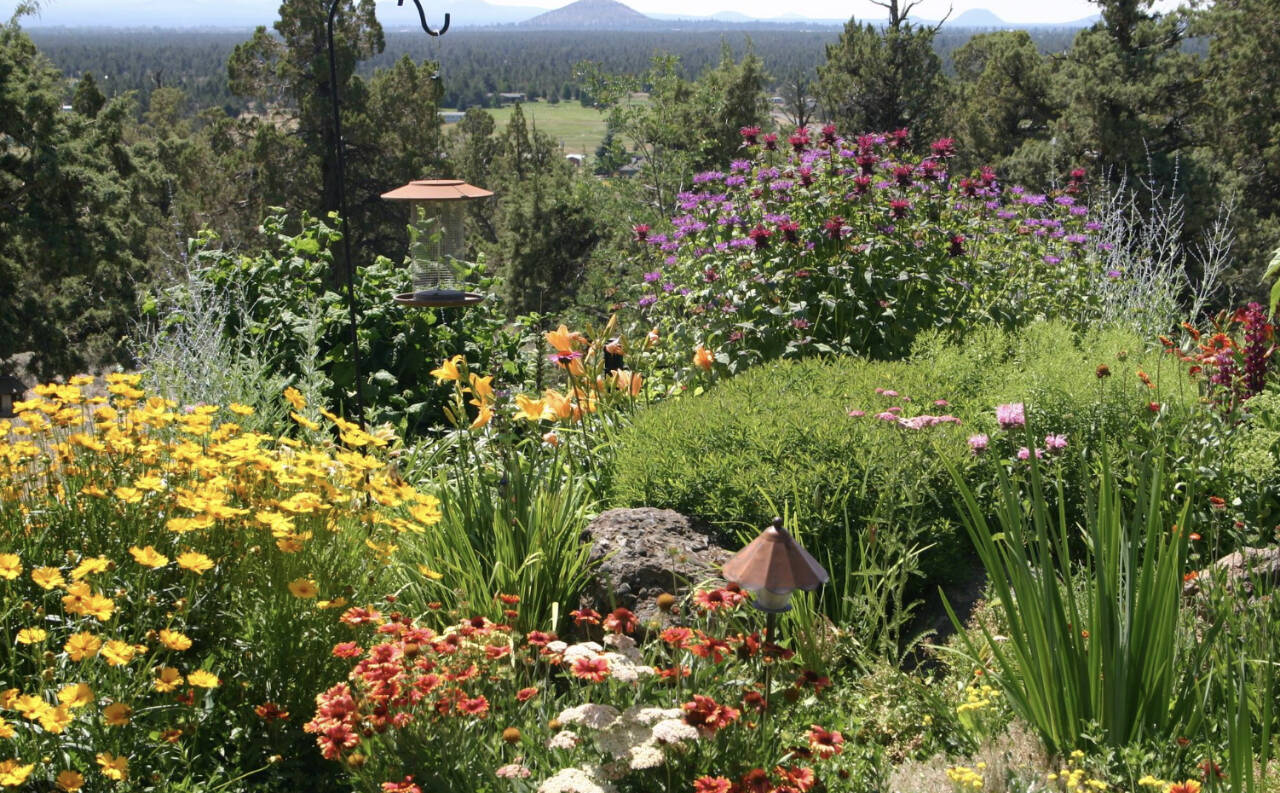Have you ever asked yourself, “How can I create bouquets with pizzazz?” Or, “What is it that makes professional bouquets so interesting, artistic, romantic or elegant?”
A few basic design elements are required:
• knowledge of the color wheel and how colors play off of one another: cool vs warm, primary, complimentary, analogous, and monochromatic.
• different shapes of various flowers: disc, line, or spike.
• the impact of texture.
• elements outside of the box such as vines, shrubs, or branches.
You don’t need a large cutting garden to achieve this outcome. If you are familiar with ikebana, a form of Japanese floral arranging, you will note that only three flowers or elements are used to express this outcome.
However, if you want a fuller statement piece, you may want to draw upon a variety of elements from your garden. Most likely your container will dictate the number of stems and the architecture of your centerpiece. Pay attention to this element. It sets the stage.
As gardeners, we gaze out of our windows at the delight of a myriad of color, texture, and form in our gardens. How can we bring this beauty inside for an up close and personal experience?
Obviously, one of the first steps is to keep these beauties looking fresh and perky as long as possible. Freshness starts once you cut your first stem. Do this either early in the morning or late in the evening, when the sun is down and never during the heat of the day. Heat zaps the flowers and you will lose at least a day of beauty.
The most important thing to do is to take a bucket of cold water to the garden and, as you cut each stem, strip all of the extra foliage off of the stem. You will be adding the foliage impact back into the bouquet later.
If you leave the excess foliage on each “focal flower,” it will take the hydration away from your most important star in the bouquet.
Once you have gathered up one-third focal flowers, one-third filler flowers, and one-third foliage, prepare another container again with cold water (water so clean you would be willing to drink it). Recut each stem by a half-inch or more and place them into this fresh container of water. A fresh supply of water or floral preservatives such as Floral Life or Quick Dip will help bouquets last several days longer.
There are a few exceptions to this rule when it comes to flowers that benefit just from fresh exchange of water. We call them dirty flowers.
One of these dirty flowers are Zinnias. These flowers require a splash of bleach in liquid form or in a tablet (available online), to be added to their water. They will contaminate the water and other flowers that they are paired with if you do not add bleach of some format to their water.
Dahlias, another garden favorite, do not have a long vase life on their own, but if you are willing to boil water and dip a freshly cut dahlia stem into the water, allowing the stem to cool with the water and then arrange them, you will gain at least two days of enjoyment.
Now, with this technical knowledge of flower prepping, let the designing begin!
Much has changed in the florist industry; however, key elements of design have never changed. It is about color, texture, line, form and balance.
Whether you want a low centerpiece for a table top; a 20- to 30-inch-high Eiffel Tower impact piece; a frontal for an event; or a loose organic look, elements of color, texture, line and form are all important to achieve the necessary balance.
As mentioned above, the suggested method based on practical experience is to use one-third focal, one-third filler, and one-third foliage. The odd numbers 3-5-7 is pleasing to the eye when selecting your focal flowers. Examples from your garden could be zinnias, peonies, lilies, etc.
After that, you will want to select filler flowers, such as snapdragons, yarrow or feverfew. Foliage could be dusty miller, sage, or spirea for example.
Back in the day, designing with “frogs” in a vase was the norm, then it moved to cages, floral foam, and now tape used as a grid on a vase or chicken wire cages. Each has their place and is dictated by which flowers you are using and their ability to absorb water.
For years, florists started out greening up their vases with filler such as salal or a variety of ferns to make a base from which they would work. Today, many florists create their design with the focal flowers and filler and then green up with foliage. How things have changed!
If you are interested in getting to know more about floral design, come join us at 10:30 a.m. on Saturday, Aug. 3, at the Woodcock Demonstration Garden, for “Making the Most of Your Floral Garden; Preparing and Designing Extraordinary Bouquets” by Marylou Ozbolt-Storer and Pam Pace. Bring a pair of garden snips, a vase with at least a 3- to 5-inch opening, and let the designing begin!
Marylou Ozbolt-Storer is a Master Gardener and owner of Sequim’s Shooting Star Gardens, a cut flower farm in Gardiner.



